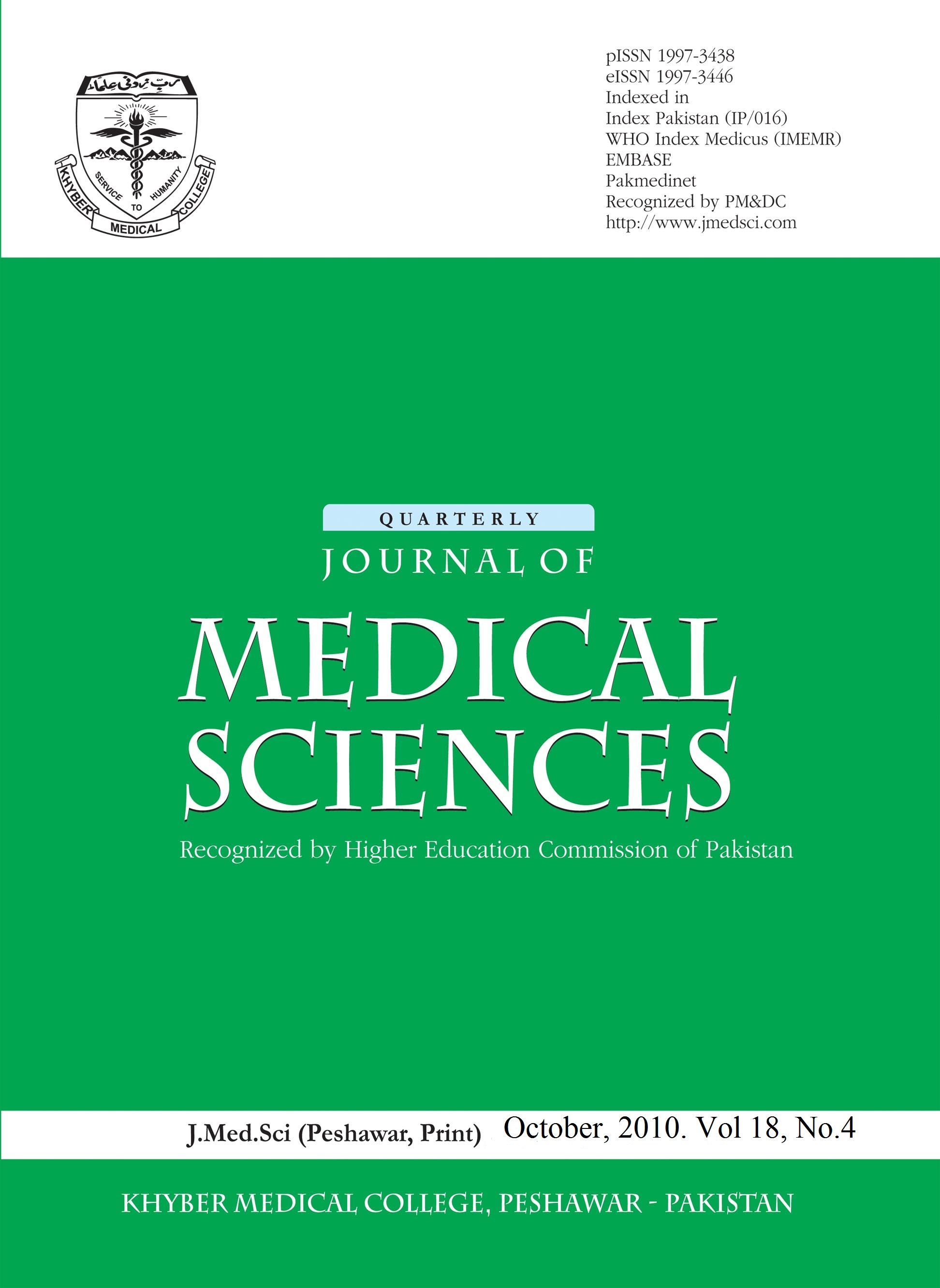TRANSPERITONEAL APPROACH WITH INTERPOSITION OF OMENTUM FOR THE REPAIR OF SUPRATRIGONAL VESICO-VAGINAL FISTULAE
Main Article Content
Abstract
Objectives: To determine the technical benefits and success rate of transperitoneal approach with interposition of
omentum for the repair of supratrigonal Vesico-vaginal fistulae (VVF).
Material and Methods: This study was carried out on 32 patients that were referred to our department from different
gynae units and maternity homes of NWFP. Thirty-one patients had primary and one patient had recurrent VVF. The
fistulae were approached transperitoneally, then Urinary bladder was opened between two stay sutures and closed
by a single layered continous extramucosal suturing technique, the vagina was closed continuously with the suture
passing through all layers. All the details of the patients were entered into a structured proforma.
Results: Mean fistula size was 2.8 cm (range 1.0 to 3.7 cm). Mean operation time was 120 minutes and only one
patient required a blood transfusion, and one patient required ureteroneocystomy. All except 2 patients who had a
recurrence, were dry after 2-3 weeks. One patient had wound infection and another has had frequency of micturition.
No patient suffered from peritonitis or adhesive intestinal obstruction.
Conclusion: The transperitoneal approach is safe, effective and gives good access to the bladder and ureter as well
as excellent functional results.
Article Details
All articles published in the Journal of Medical Sciences (JMS) are licensed under the Creative Commons Attribution 4.0 International License (CC-BY 4.0). Under the CC BY 4.0 license, author(s) retain the ownership of the copyright publishing rights without restrictions for their content, and allow others to copy, use, print, share, modify, and distribute the content of the article even for commercial purposes as long as the original authors and the journal are properly cited. No permission is required from the author/s or the publishers for this purpose. Appropriate attribution can be provided by simply citing the original article. The corresponding author has the right to grant on behalf of all authors, a worldwide license to JMS and its licensees in all forms, formats, and media (whether known now or created in the future), The corresponding author must certify and warrant the authorship and proprietorship and should declare that he/she has not granted or assigned any of the article’s rights to any other person or body.
The corresponding author must compensate the journal for any costs, expenses, or damages that the JMS may incur as a result of any breach of these warranties including any intentional or unintentional errors, omissions, copyright issues, or plagiarism. The editorial office must be notified upon submission if an article contains materials like text, pictures, tables, or graphs from other copyrighted sources. The JMS reserves the right to remove any images, figures, tables, or other content, from any article, whether before or after publication, if concerns are raised about copyright, license, or permissions and the authors are unable to provide documentation confirming that appropriate permissions were obtained for publication of the content in question.

